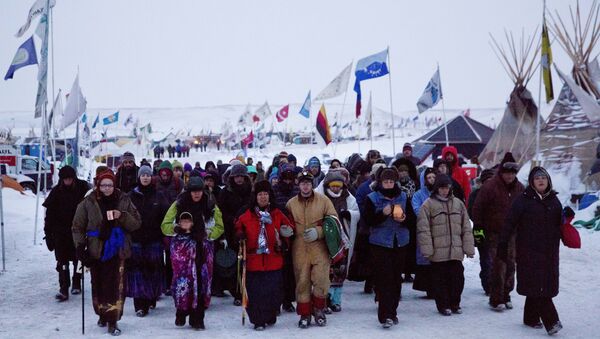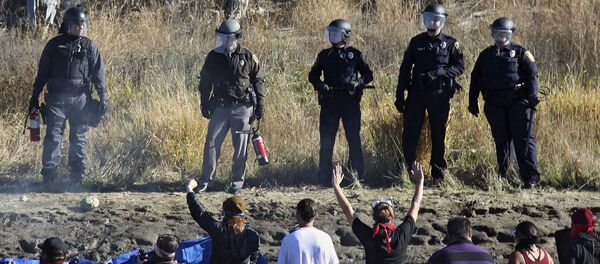A reported 200,000 barrels of crude oil would travel daily through the proposed Pilgrim pipeline, making its way from the Bakken oil fields in Albany, New York, to the Bayway Refinery in Linden, New Jersey. The 178-mile pipeline would traverse 30 municipalities in New Jersey, carrying the flammable toxic substance through environmentally vulnerable areas.
One such area is the Ramapough Lunaape Nation, which houses the Wanaque Reservoir, a water supply that feeds roughly 4 million people. In honor of the Standing Rock camp in North Dakota, members of the Lunaape tribe, led by chief Dwaine Perry, have constructed a 13-acre encampment, with teepees, and Perry is encouraging activists to attend, in an effort to replicate the Standing Rock demonstrations.
Perry told NBC New York, "The community needs to stop looking at the Ramapoughs as the canary in the mine and get their helmets on and stand with us, because if that goes it doesn’t matter what your home costs, you can’t drink oil."
Leaders from 28 towns have passed resolutions denouncing the pipeline, and a Municipal Pipeline Group has been initiated to oppose the project.
Similar to the Standing Rock Sioux, the Lunaape First Nations tribe have faced legal hurdles, even though they occupy ancestral land. They have received a summons for establishing a camp without a permit from the town of Mahwah, and will have to go to court in late January 2017.
Unlike the Standing Rock Sioux, however, the Lunaape only have statewide recognition, and, as such, the representatives within the federal government are not motivated to recognize the same level of obligation to mediate in the dispute.
Mahwah mayor William Lafore said, "One leak will determine the fate of our community and the millions of people between here and the Newark basin."
In 2013, a Bakken crude oil leak in North Dakota dumped an estimated 840,000 gallons of oil onto seven acres of land. The North Dakota Department of Health noted that the soil was contaminated down to 30 feet below the surface.
Sierra Club organizer Wade Schaffer told ThinkProgress at the time, "Oil companies are making a lot of money in North Dakota, and they should be spending money to put these safeguards in place so we don’t have people’s health and safety at risk."




